Why are lightning rods pointed in shape ? Have you seen lightning rods on top of some high rise towers and buildings? Have you ever wondered why they are placed there and why on tall buildings only? And also why do they have pointed shapes?
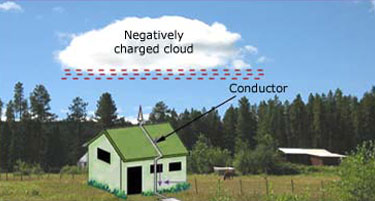
Lightning occurs due to the build up of static electrical charges in clouds. These charges discharge towards another body (may be the earth, a building or another cloud), which is at a different potential. The discharge or spark is called lightning.
Moisture bearing clouds are initially electrically neutral. But as the mass of cloud increase in size, they start rubbing against each other. This phenomenon makes some clouds positively charged and some clouds negatively charged.
A negatively charged cloud will tend to induce a positive charge in the local areas around itself. In the figure below you can see that the cloud is negatively charged and it induces a positive charge on the house including the lightning conductor.
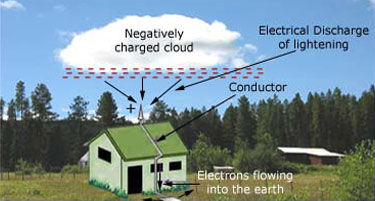
A lightning conductor is made up of a sharp pointed metal (usually copper metal, as it is a very good conductor) connected directly to the ground. That is, it is earthed or grounded properly. The lightning conductor is placed higher than the roof so that if lightning strikes, it strikes the conductor before it can reach the house. The conductor quickly makes the charges flow down to the earth and the house is saved from any damage.
In an urban area, high rise buildings are more at a risk for a lightning strike. They are at a ground potential and they come closer to the charged clouds. This gives an easy close path for the charges built up in the clouds. Thus a lightning discharge can damage them first. The low level buildings are therefore relatively safer. This is the reason why most of the high rise buildings and tall towers are equipped with lightning rods. In an open county side even low height houses have lightning rods placed on their roofs.
Now the question arises as to why are the lightning conductors are pointed in nature?
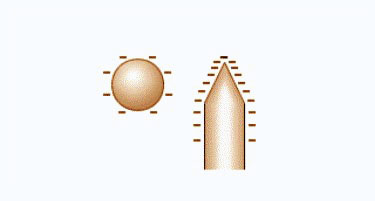
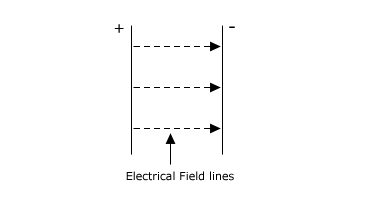
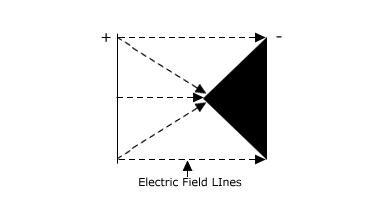
To answer this we have to consider two aspects. First we have to know how charges are distributed in a body. And secondly we have to know how the electric field is distributed between two charged bodies. Electric field lines are lines between two surfaces with different potential along which a charge will be able to flow.
Consider a surface that has acquired negative charges due to rubbing. At any given time the electrons are distributed over the outer surface of a charged body. As a body narrows the charge per unit surface area increases. Thus a spherical surface and a pointed surface will have different charge distribution. The figure below shows the effect. It can be seen that the density of charges at the pointed edge is more. Thus a pointed object leaks or accepts charges more readily than a rounded object.
Consider the second condition of electric field lines.
If two plates are kept parallel and one is charged positively and the other is charged negatively, the electric field lines will be straight lines perpendicular to the surface.
If one surface is pointed then the field lines will appear to be as shown.
You can see how the electric field lines get concentrated at the pointed surface.
Let us see again how a negatively charged cloud affects its surroundings. The negative charges will induces a positive charge on the house including the lightning conductor. Because of the pointed shape of the lightning conductor, the electric field lines will converge more on the lightning conductor and less on the house. Also the pointed nature of the lightning conductor will make it acquire more number of positive charges on its tip.
Thus when the negative charge is discharged by the cloud, it will first strike the pointed tip of the lightning conductor and quickly travel to the earth (earth is able to accept infinite number of electrons). The discharge will be quickly over and the house and its surroundings will be saved from damage.
It has to be noted here that the charges induced and the discharge of the charges by a cloud happens very quickly, in a flash!
Another question that might arise is that why do most lightning come as a streak and not a straight line?

Well the answer to this lies in the way discharge takes place. The electric field induced by the charged cloud is strong enough to ionize the gas atoms or molecules in the atmosphere. These essentially decide the path along which the lightning or discharge will go. Wind blowing during a thunderstorm, along with rains makes the charged air molecules sway or move about. This gives the lightning a streak or a fork like appearance.